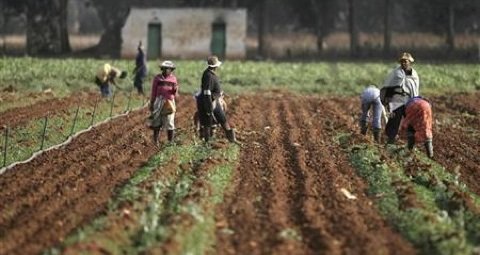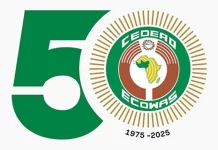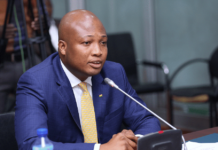
A new catch phrase, “Land Degradation Neutrality”, is being brought into play with increasing prominence, with the intention of using the concept to ensure continued ecosystem functionality, broadly speaking. Yet what it delivers potentially locks communities out of their own lands and ultimately provides a licence for unfettered degradation.
The rapid depletion of the world’s land resources has been a topic of increasing concern in the past decades. The statistics are daunting: the United Nations estimates that 12 million hectares of land worldwide – an area half the size of the UK – is degraded every year to sustain our global economy. In light of burgeoning global populations and the impacts of global warming on agriculture, this is a major concern.
With the right incentives in place, a critical mass of private sector initiatives will rapidly emerge
The United Nations Convention to Combat Desertification (UNCCD) was adopted in 1994 to promote sound governance of land-based resources, and governments agreeing to the Convention undertook to involve local communities in planning and implementing sustainable land management interventions.
Viewed as “Africa’s Convention”, the UNCCD failed to attract significant donor support, and in many signatory countries governments have failed to create conditions in which affected populations are enabled and empowered to manage the land resources on which they depend in more sustainable ways. According to a UNCCD publication, “despite the twenty-year-long endeavours throughout the globe, the situation became worse”.
The concept of Land Degradation Neutrality (LDN) first gained credibility at the UNCCD COP10 in 2011, and subsequently a goal for LDN was agreed at the UN Conference on Sustainable Development (Rio+20) the next year. Its most recent iteration is as a target for Goal 15 of the UN’s Sustainable Development Goals (SDGs): “Sustainably manage forests, combat desertification, halt and reverse land degradation, halt biodiversity loss”.
The LDN-specific target is: “By 2030, combat desertification, restore degraded land and soil, including land affected by desertification, drought and floods, and strive to achieve a land degradation-neutral world”.
The right to degrade?
What exactly is meant by LDN? Based on the Report of the Intergovernmental Working Group on the follow-up to the outcomes of Rio+20: “Land Degradation Neutrality is a state whereby the amount and quality of land resources, necessary to support ecosystem functions and services and enhance food security, remains stable or increases within specified temporal and spatial scales and ecosystems.”
It does not appear that the investments in restoration of the land are intended to directly benefit the poor, other than by providing them with employment opportunities, probably of the most menial type.
On the face of it this is a compelling proposition. Governments commit to ensuring that the rate of restoration is at least of equal magnitude as the rate of degradation. Food production and eco-systems are maintained, thus also contributing to political and economic stability.
However, at its worst this initiative could be seen as giving governments and powerful interests the right to degrade as long as they can rehabilitate an equivalent area elsewhere. The assumption appears to be that the area within which “neutrality” must be achieved is either the nation state or the natural borders of an ecosystem.
However, one ‘banked’ hectare might not be of the same quality as a hectare that is lost, and the services provided by the restored hectare may not be as valuable as that provided by the degraded land. The proposed voluntary reporting on LDN could become a meaningless exercise of manipulation of data to show a zero loss, when in fact productive resources are still diminishing.
Governance indicators and equity
Sound governance is a pre-requisite for sustainable land management, and has been strongly highlighted by civil society as a significant and dangerous omission in the formulation of the Millennium Development Goals.
It will be of vital importance to articulate and adopt governance indicators related to land degradation and restoration, such as indicators for retention of rights of resource use when land is restored, indicators reflecting the perceived quality of life of affected land users, and indicators against which to assess the relevance and effectiveness of institutions for management of communal land.
Most importantly, in the context of the UNCCD the question of equity must be addressed. Achieving LDN should not be at the expense of the poor, who might lose access to land if it is “restored” in ways that increase its productive and economic value.
When poor people lose access to land, many become economic migrants, adding to the pressures on resources and governance in nearby (and even distant) towns and cities. Article 4/2/c of the UNCCD obliges Parties to “integrate strategies for poverty eradication into efforts to combat desertification”.
Land Degradation Neutrality is a top-down concept, and even though it appears relatively harmless, it may prove the undoing of millions of people who make their living on land that others judge to be degraded. At this point rural South Africans are unaware of the concept or its implications.
The Proposed LDN Fund
In the White Paper on the Land Degradation Neutrality Fund (LDNF) published by the Global Mechanism of the UNCCD in June 2015, the cause of the problem is described as being a paradigm of “exploit-deplete-migrate”, which is seen as characterising the management of natural infrastructure.
What is proposed is the establishment of a Land Degradation Neutrality Fund, which would facilitate investments that would enable as much land as is being degraded to be rehabilitated.
The vision articulated for the LDNF is: “Our vision is one where economic growth does not result in long-term net losses to the environment and society that will be borne by future generations. In a land degradation neutral economy, all ecological and social dimensions of operations are taken into account, negative externalities are minimised and rehabilitation mechanisms are at work”.
There is an interesting dissonance here between the characterisation of the cause as “exploit-deplete-migrate” (clearly this refers to the global poor and brings to mind displaced environmental refugees), and the link to economic growth as the driver (despite the reality that growth-oriented economic activities such as mining, urban expansion and industrial development are inimical to sustainable land use). It is thus important to ask which aspect the LDNF seeks to address, and in what ways.
The White Paper is informed by the belief that “with the right incentives in place, a critical mass of private sector initiatives will rapidly emerge, grow to scale and become self-sustaining”. It promises that “under the right conditions, the returns from these investments will be huge”.
The Fund is envisaged as a “coordination platform” to leverage investments that would establish a framework to “ensure adherence to certain standards and alignment with investors’ demand(s)”. Whereas alignment with investor’s demands is prioritised, meeting the needs of traditional land users is not. The LDNF “…. seeks to provide a structured portfolio through which private and public sector actors can engage”. The interests that are to be served by the creation of this Fund are clearly not those of the poor.
The Fund intends to support “a steady transition toward a land degradation neutral economy.” What sort of economy might this be? Apparently it is a neo-liberal one in which investors are enriched and the land is restored. It does not appear that the investments in restoration of the land are intended to directly benefit the poor, other than by providing them with employment opportunities, probably of the most menial type.
The Fund will “enable the scaling up of the many viable business models based on upgraded land that generate suitable financial returns while contributing to broader food, water and energy security goals.” In order to do so, it will establish a public–private partnership (PPP) among private institutional investors, international finance institutions and donors.
The Ethiopian example
In Africa investments of this nature have resulted in the alienation and proletarianisation of rural populations. People who have been resource users become either labourers or are displaced to other areas.
An example of this sort of “development” is the establishment of 100,000 hectares of sugar cane in the valley of the Awash River in Ethiopia on land that had been used by Afar pastoralists since time immemorial.
A further example is the Saudi Star investment in the Gambella lowlands, a wetland the size of Belgium in Ethiopia’s southwest, whose rivers (collectively known as the Baro-Akobo River Basin) feed the Nile. Much of the flow of this system has been diverted to irrigate rice for export to Saudi Arabia. The impacts on the local population have been cataclysmic. Afar pastoralists face deepening poverty because they have lost access to their richest traditional rangelands.
According to GIZ, more than 56% of the population lives in absolute poverty, a situation exacerbated by the depletion of the remaining natural resources and the effects of climate change. Genocide Watch reported a “campaign of genocidal violence” that forced between 6,000 and 8,000 Anuak people to flee Gambella for the relative safety of Sudan. Long-term concessions granted by the government made these “developments” possible.
Investment in land-based enterprises in Africa has become fashionable in recent decades. Corporates like Phatisa (a private equity fund manager that invests in sub-Saharan Africa with its head office in South Africa) manage investments for others such as the African Agriculture Fund (a Mauritius-based private equity fund). Their investments are in agricultural businesses. The Africans that benefit from these enterprises tend to be investors or labourers, not small-scale farmers.
The LNDF plans to mobilise USD 2 billion per annum to invest in the rehabilitation of at least 12 million hectares of degraded lands, primarily in the developing world.
The Secretariat of the UNCCD has engaged the services of Pascal Canfin, former French Minister of Development, to develop technical aspects of the LDNF. In October, the Twelfth Conference of the Parties of the UNCCD will be convened in Ankara, Turkey, and decisions will be made that will shape the future of investment in land restoration on a global level.



























